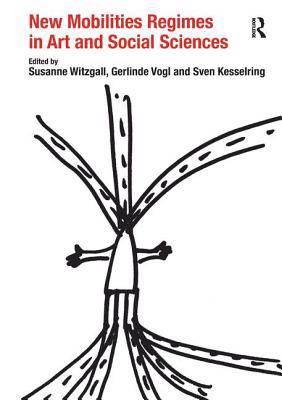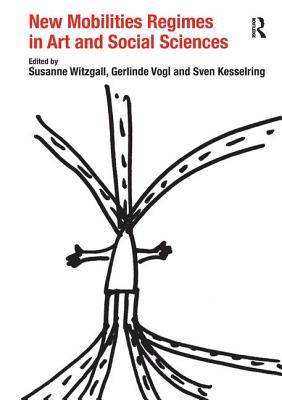
- Afhalen na 1 uur in een winkel met voorraad
- Gratis thuislevering in België vanaf € 30
- Ruim aanbod met 7 miljoen producten
- Afhalen na 1 uur in een winkel met voorraad
- Gratis thuislevering in België vanaf € 30
- Ruim aanbod met 7 miljoen producten
Zoeken
New Mobilities Regimes in Art and Social Sciences. Edited by Susanne Witzgall, Gerlinde Vogl and Sven Kesselring
Susanne Witzgall, Gerlinde Vogl
Paperback | Engels
€ 70,45
+ 140 punten
Omschrijving
New Mobilities Regimes analyses how global mobilities are changing the world of today and the role of political and economic power. Bringing together essays by leading scholars and social scientists, including Mimi Sheller and BÃ1/4lent Diken with the work of well-known artists and art theorists such as Jordan Crandall, Ursula Bieman, GÃ1/4lsÃ1/4n Karamustafa and Dan Perjovschi this book is a unique document of the cross-disciplinary mobility and power discourse. The specific design, integrating the text and art elements to create a singular dialogue makes for an exciting intellectual and aesthetic experience. Illustrated by a range of studies which examine the regulation and structure of mobility, such as the daily routines of teleworkers, Ukrainian cleaners in Western Europe, the mobility policies of global corporations, and the impact of bicycle policies on public space, New Mobilities Regimes emphasizes the routes and crossroads of migration flows as well as at the interaction of mobility and new spatial concepts. The contributors are concerned with both the positive outcomes and the disappointments of the global mobilizations in modern lives. This book is ground-breaking in that it calls for the reassessment of the figurative arts in providing independent and insightful knowledge-generating research on the nature of mobility and highlights the new appreciation of visual representations in sociology, cultural geography and anthropology.
Specificaties
Betrokkenen
- Auteur(s):
- Uitgeverij:
Inhoud
- Aantal bladzijden:
- 420
- Taal:
- Engels
Eigenschappen
- Productcode (EAN):
- 9781138269262
- Verschijningsdatum:
- 16/11/2016
- Uitvoering:
- Paperback
- Formaat:
- Trade paperback (VS)
- Afmetingen:
- 175 mm x 246 mm
- Gewicht:
- 779 g

Alleen bij Standaard Boekhandel
+ 140 punten op je klantenkaart van Standaard Boekhandel
Beoordelingen
We publiceren alleen reviews die voldoen aan de voorwaarden voor reviews. Bekijk onze voorwaarden voor reviews.












